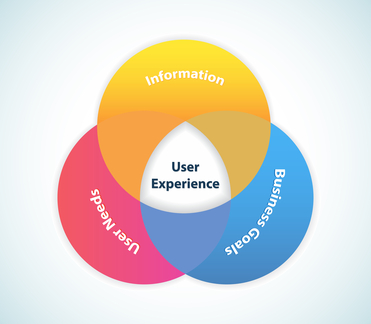
The Anatomy Of A Great Website
Advertising / Design / Marketing / Technology
August 11, 2016Think of your website as the window into your company’s soul.
Or just think of it as a vital branding and sales tool.
A website is often the first step in sharing your company’s voice with the world. We’ve found that most customers believe their experience with your website will a mirror their experience with your company.
So what makes a great website? Let’s dissect…
Understanding these 7 things will take your website from “eh” to “awesome:”
1. It’s all about the user experience.
Photo: MarketingTechBlog.com
The user experience is the way your customers interact with your site. “88% of online customers are less likely to return to a site after a bad experience,” says Invision. Provide your customers with easy navigation, make your pages responsive, and communicate clear calls to action (CTA).
HELPFUL TIP: Start the process by developing an Information Architecture (a structural layout of how all the pages in your site connect), and end it with a usability test (performed by people with no prior knowledge of the site).
2. Don’t overwhelm your audience.
Some people come to a website with a specific purpose: buy a ticket, find a contact number, etc. Others want to explore and dig into archives or photos.
The key is to give both users what they want. Design simple and clean pages (especially your homepage) that make important elements, like a “Buy Tickets” button, stand out. Then, allow access points for further information, via dropdown menus, expandable content, sidebars, and links, for those users who want more.
3. Be responsive.
Photo: Blue-Note (Is this photo making you hungry or is it just us?)
Consumers are using smartphones and tablets more than ever. In fact, comScore reported that 2 out of every 3 minutes spent online happen on a mobile device. Make sure your company is ready by creating a responsive site. This means pages adapt to whichever screen they are being viewed on, ensuring a more positive user experience and showing customers that your company is up to speed in the digital world.
4. Sharing is caring.
Photo: Pinterest
Your social media platforms and website should work together. Incorporate media (such as photos, videos, or music) that users can share directly to their social networks; include social icons (or embed feeds) on your website to link to Facebook, Twitter, Instagram, etc.; and share content on your social platforms that will drive traffic back to your site.
5. The details matter.
If you want your site to be a big deal, you’ll need to tackle the little things first:
>> Keep your front and back ends in check with a thorough proofreading. A misspelled word or broken link has no place on your site.
>> Don’t forget important content like contact info or social media icons.
>> Keep your SEO in check with keywords and meta tags.
>> Make sure your site is moving fast. Here are some things that will slow it down.
>> Build your site on a solid platform (like WordPress), with a hosting site that has your back.
6. Get creative.
Photo: Superior City
94% of website first impressions are design-related (Invision) and “two-thirds of people would rather read something beautifully designed than something plain” (Adobe). So yeah, design matters. Make something captivating, beautiful, and creative, like one of these cool parallax scrolling sites.
7. Let your goals be your guide.
Remember: you are your website. If you get lost, go back to your company’s mission. Your content should represent what you believe in, your look should reflect your branding, and your CTAs should support your goals.
Speaking of goals, make sure you have them. Determining your company’s primary objectives and figuring out how your website can help facilitate them will inform your design, content, and user flow. Whether you want to focus on completed purchases, newsletter signups, or simply general awareness, finding the metrics to measure your success if a critical part of fine tuning your website.







